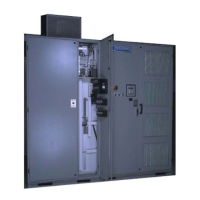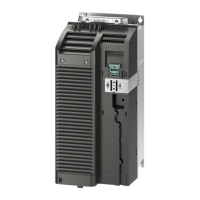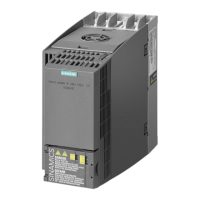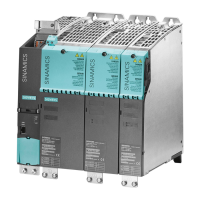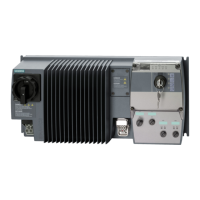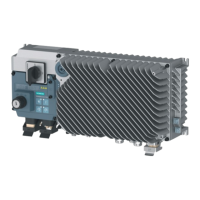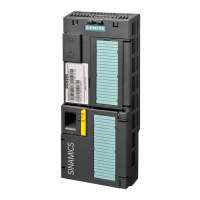Fault Display Type Enable Potential causes and corrective actions
xx HV AP Conguration
xx = cell that is faulted
F Fixed Cause
The fault is set when the 1375 HV AP cell type is selected, and a non-AP cell
type (no link fault) is detected, or an AP cell that won't congure. This cell
fault will set the HV AP mismatch fault. This drive fault is persistent and not
resettable.
Action
1. Program cell with proper rmware if all protections are in place.
2. Replace non-matching cell.
xx HSink Thermstr Loss
xx = cell that is faulted
F Fixed Cause
HSink Sensor Loss is a cell fault that indicates the water temperature ther‐
mistor resistance is too high. This fault only applies to 1375 HV AP cells.
Action
1. Fix any loose connections.
2. Replace outlet water thermistor
3. Replace CCB.
xx Over Temp. Fault
xx = cell that is faulted
F Fixed Cause
The over-temperature switch fault occurs if water ow to the power cell
is insucient to cool the cell. The fault is applicable to 1375 HV AP cells.
Action
1. Check for restricted water ow to the cell and correct as necessary.
2. Fix any loose connections.
3. Replace CCB or replace cell.
11.12.2 Troubleshooting General Power Cell and Power Cell Circuitry Faults
This section may vary per product. Refer to the Operating Instructions manual for specic details.
The types of faults addressed in this section include the following:
• AC fuse(s) blown faults
• control power faults
• device out of saturation (OOS) faults
• capacitor sharing faults
• bypass failed faults
• VDC undervoltage faults
• blocking failure faults
• switching failure faults
• input rectier fault (shorted diode, open diode, or AC input short-circuit)
Handling AC fuse(s) blown faults
These faults are caused by the blowing of the power fuses on the front end of the cell.
Troubleshooting Faults and Alarms
11.12 Cell Faults and Alarms
NXGPro+ Control Manual
Operating Manual, A5E50491925A 481
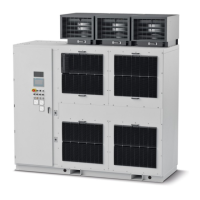
